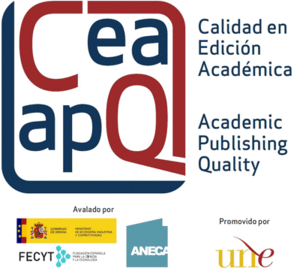Grado en Estudios Ingleses
La asignatura Fonética y Fonología Inglesas supone una introducción bastante exhaustiva a la naturaleza física, articulatoria y perceptual del fenómeno lingüístico en inglés (en su vertiente fonética) y a la organización sistemática en forma de contrastes fonológicos y organización del componente fónico del lenguaje (en su vertiente fonológica), tanto a nivel segmental como suprasegmental. La asignatura basa su descripción en el acento británico RP (Received Pronunciation), aunque lo contrasta de manera sistemática con el estándar de facto en Estados Unidos, el General American (GA) y con el español como sistema fonético-fonológico de partida de la mayoría de estudiantes.
Synopsis
The subject English Phonetics and Phonology is a fairly comprehensive introduction to the physical, articulatory and perceptual nature of the linguistic phenomenon in English (in its phonetic aspect) and to the systematic organisation in the form of phonological contrasts and organisation of the phonic component of language (in its phonological aspect), both at segmental and suprasegmental level. The subject is based on the British RP (Received Pronunciation) accent, although it contrasts it systematically with the de facto standard in the United States, the General American (GA) and with Spanish as it is the phonetic-phonological system of departure for the majority of students.
INTRODUCCIÓN
THEORETICAL PART
CHAPTER 1. Introduction: English phonetics and phonology
1.1. Overview
1.2. Learning outcomes
1.3. Contents
1.3.1. The speech chain
1.3.2. Definition and branches of phonetics
1.3.3. Definition and branches of phonology
1.3.4. English phonetics and phonology
1.4. Further reading and references
CHAPTER 2. Speech Production, Transmission, and Perception
2.1. Overview
2.2. Learning outcomes
2.3. Contents
2.3.1. Mechanisms of speech production
2.3.2. The subglottal system
2.3.3. The laryngeal system
2.3.4. The supraglottal system
2.3.5. Airstream mechanisms
2.3.6. Mechanisms of speech transmission
2.3.7. Mechanisms of speech perception
2.4. Further reading and references
2.5. Appendix. The pronunciation of technical terms
CHAPTER 3. Sound Description, Classification and Analysis
3.1. Overview
3.2. Learning outcomes
3.3. Contents
3.3.1. Introduction
3.3.2. Description and classification of consonants
3.3.3. Description and classification of vowels
3.3.4. Speech analysis tools
3.3.5. Notation and transcription
3.4. Further reading and references
CHAPTER 4. The Syllable and the Phonological Word
4.1. Overview
4.2. Learning outcomes
4.3. Contents
4.3.1. The syllable
4.3.2. The phonological word
4.4. Further reading and references
CHAPTER 5. Monophthongs
5.1. Overview
5.2. Learning outcomes
5.3. Contents
5.3.1. Parameters for monophthong description
5.3.2. RP monophthongs: An overview
5.3.3. RP monophthongs
5.3.4. RP and GA monophthongs
5.3.5. RP and Spanish monophthongs
5.4. Further reading and references
CHAPTER 6. Diphthongs
6.1. Overview
6.2. Learning outcomes
6.3. Contents
6.3.1. Parameters for the description of English diphthongs
6.3.2. RP diphthongs
6.3.3. Triphthongs in RP?
6.3.4. RP vs GA diphthongs
6.3.5. RP English vs Spanish diphthongs
6.4. Further reading and references
CHAPTER 7. Approximants
7.1. Overview
7.2. Learning outcomes
7.3. Contents
7.3.1. Parameters for the description of approximants
7.3.2. RP approximants: An overview
7.3.3. Devoicing
7.3.4. /j/ and /w/
7.3.5. /l/ and /r/
7.3.6. English vs Spanish approximants
7.4. Further reading and references
CHAPTER 8. Fricatives and Affricates
8.1. Overview
8.2. Learning outcomes
8.3. Contents
8.3.1. Parameters for the description of fricatives and affricates
8.3.2. RP fricatives and affricates: An overview
8.3.3. English fricatives
8.3.4. English affricates
8.3.5. English vs Spanish fricatives and affricates
8.4. Further reading and references
CHAPTER 9. Plosives and Nasals
9.1. Overview
9.2. Learning outcomes
9.3. Contents
9.3.1. Parameters for the description of plosives and nasals
9.3.2. RP plosives and nasals: An overview
9.3.3. RP English nasals
9.3.4. Allophonic variation in RP English plosives
9.3.5. English vs Spanish plosives and nasals
9.4. Further reading and references
CHAPTER 10. Lexical and Rhythmic Stress
10.1. Overview
10.2. Learning outcomes
10.3. Contents
10.3.1. What is stress?
10.3.2. Parameters
10.3.3. Lexical stress
10.3.4. Rhythmic stress
10.4. Further reading and references
CHAPTER 11. Rhythm
11.1. Overview
11.2. Learning outcomes
11.3. Contents
11.3.1. Linguistic rhythm
11.3.2. Basic English rhythmic pattern
11.3.3. Rhythm in English
11.3.4. English vs Spanish rhythm
11.4. Further reading and references
CHAPTER 12. Connected Speech Processes
12.1. Overview
12.2. Learning outcomes
12.3. Contents
12.3.1. English connected speech processes
12.3.2. Elision
12.3.3. Assimilation
12.3.4. Sandhi
12.4. Further reading and references
CHAPTER 13. Intonation
13.1. Overview
13.2. Learning outcomes
13.3. Contents
13.3.1. What is intonation?
13.3.2. Intonation in languages
13.3.3. The tone unit
13.3.4. Aspects of intonation
13.3.5. Tonality
13.3.6. Tonicity
13.3.7. Tone
13.3.8. English vs Spanish intonation
13.4. Further reading and references
PRACTICAL PART
CHAPTER 14. Transcription Practice
14.1. Practice implementation
14.1.1. Aims
14.1.2. Content
14.1.3. Methodology
14.1.4. Procedure
14.1.5. Materials and resources
14.2. Schedule
14.3. Assessment criteria
14.4. Further reading and references
14.5. Appendices: Exercises CHAPTER 15. Spectrographic Analysis
15.1. Practice implementation
15.1.1. Aims
15.1.2. Content
15.1.3. Methodology
15.1.4. Procedure
15.1.5. Materials and resources
15.2. Schedule
15.3. Assessment criteria
15.4. Further reading and references
15.5. Appendices: Exercises
CHAPTER 16. Theory-Based Exercises
16.1. Practice implementation
16.1.1. Aims
16.1.2. Content
16.1.3. Methodology
16.1.4. Procedure
16.1.5. Materials and resources
16.2. Schedule
16.3. Assessment criteria
16.4. Further reading and references
16.5. Appendices: Exercises and concept checklist
CHAPTER 17. Oral questions
17.1. Practice implementation
17.1.1. Aims
17.1.2. Content
17.1.3. Methodology
17.1.4. Procedure
17.1.5. Materials and resources
17.2. Schedule
17.3. Assessment criteria
17.4. Further reading
17.5. Appendix: Examples of past questions


